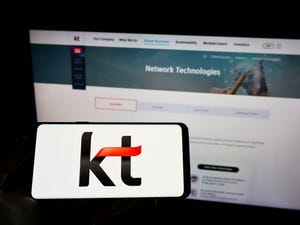MKM: Cisco Biggest Loser in AT&T SDN Plans
Ciena, Finisar, and F5 Networks cited as potential winners as AT&T pushes vendors to get on board the SDN 'white box' train.
December 30, 2013

Cisco is the biggest loser, and Ciena is among the biggest winners, as AT&T pursues the new approach to hardware and software acquisition it announced in the fall, according to a new report from MKM Partners. (See AT&T Revamps Supplier Program for SDN/NFV.)
Released just before the Dec. 31 deadline for vendor responses to AT&T Inc. (NYSE: T)'s Supplier Domain Program 2.0 Request for Information (RFI), the MKM report sees a decided shift away from purpose-built smarter hardware and toward commercial off-the-shelf boxes as part of the carrier's move to using software defined networking (SDN) and network functions virtualization (NFV) to save significant capex. (See AT&T Puts SDN/NFV in Driver's Seat.)
That's particularly bad news for Cisco Systems Inc. (Nasdaq: CSCO), which has the greatest exposure in terms of existing sales of Ethernet switches, MKM Partners notes. AT&T is moving closer to the datacenter approach taken by Google (Nasdaq: GOOG) in order to compete with those giants and their cloud services.
"We do not think AT&T will be particularly receptive to Cisco’s recently announced Application Center Infrastructure (ACI) architecture, including Nexus 9000 switches, because it still seems too complex and proprietary compared to more white box-oriented architectures," MKM writes in the report.
In general, AT&T is asking vendors whether and how they are developing SDN controllers, and how they are adapting their equipment to be controlled by SDN, MKM says. Based on those responses, the network operator will be developing more RFIs and requests for proposal in the months to come.
The research note predicts what will happen over the next five-plus years as AT&T transforms both its datacenter and wide area networks, concluding that "within our coverage universe, the long-term implications are most negative for Cisco and most positive for Ciena Corp. (NYSE: CIEN), Finisar Corp. (Nasdaq: FNSR), and F5 Networks Inc. (Nasdaq: FFIV). Outside of our direct coverage, the implications appear to be most positive for VMware Inc. (NYSE: VMW)."
Critical for companies such as Cisco and Juniper Networks Inc. (NYSE: JNPR) is whether or not AT&T moves completely away from ASIC-based hardware with some intelligence and toward the "white box" approach favored by software players such as VMWare, notes MKM. Those choices are likely to be made first for its datacenter network.
"Changes are likely to occur first in the carrier's datacenter domain, perhaps as early as 2015," MKM notes. "We believe VMware's NSX platform has a strong chance of being selected as the Data Center virtualization platform, and foresee NSX-related Controllers and standardized high volume Ethernet switches being deployed starting in 2015."
Further down the road, possibly in 2016, SDN controllers for the WAN would be deployed with the possibility of packet-optical convergence taking hold in the AT&T network, MKM states.
Of course, AT&T's decisions have the potential to resonate throughout the industry, impacting the choices made by other network operators pondering the same move to virtualization and packet-optical convergence.
Interestingly, Juniper isn't as directly impacted in a negative way as Cisco, given that it has the opportunity to pick up AT&T edge and core router business in 2014 and 2015, according to MKM. But both Juniper and Cisco may need to acquire optical assets going forward, the report notes.
— Carol Wilson, Editor-at-Large, Light Reading
You May Also Like










